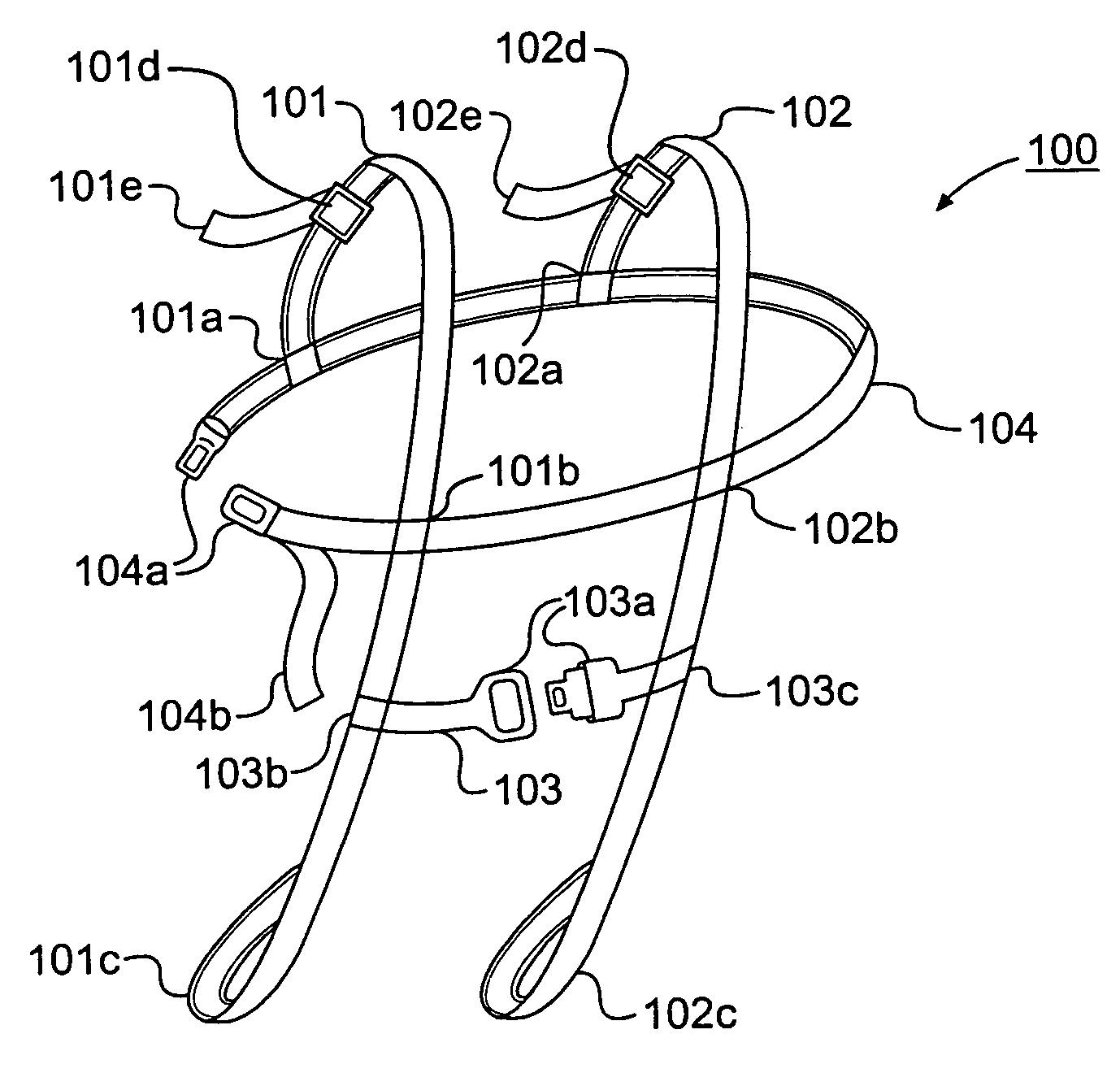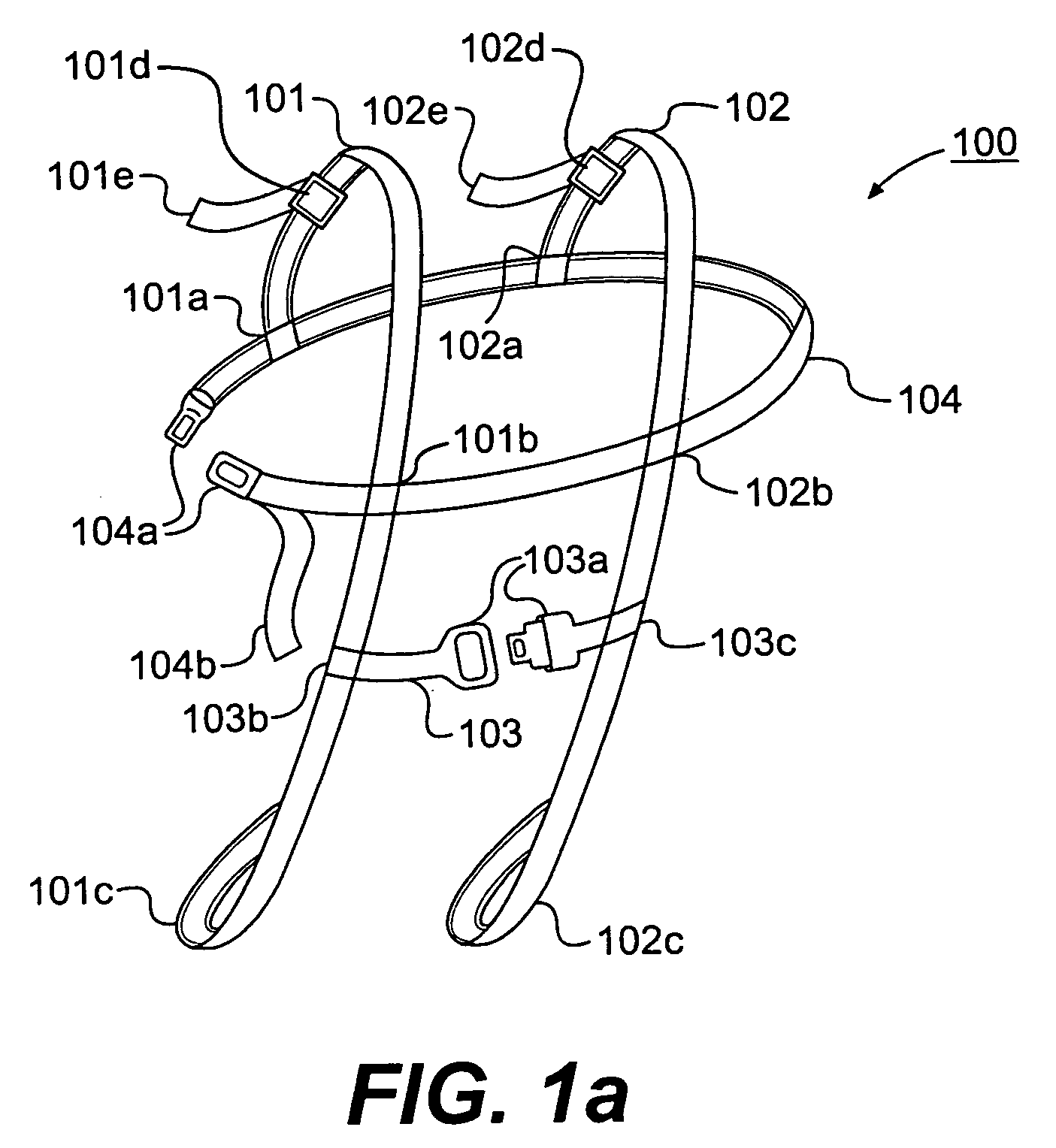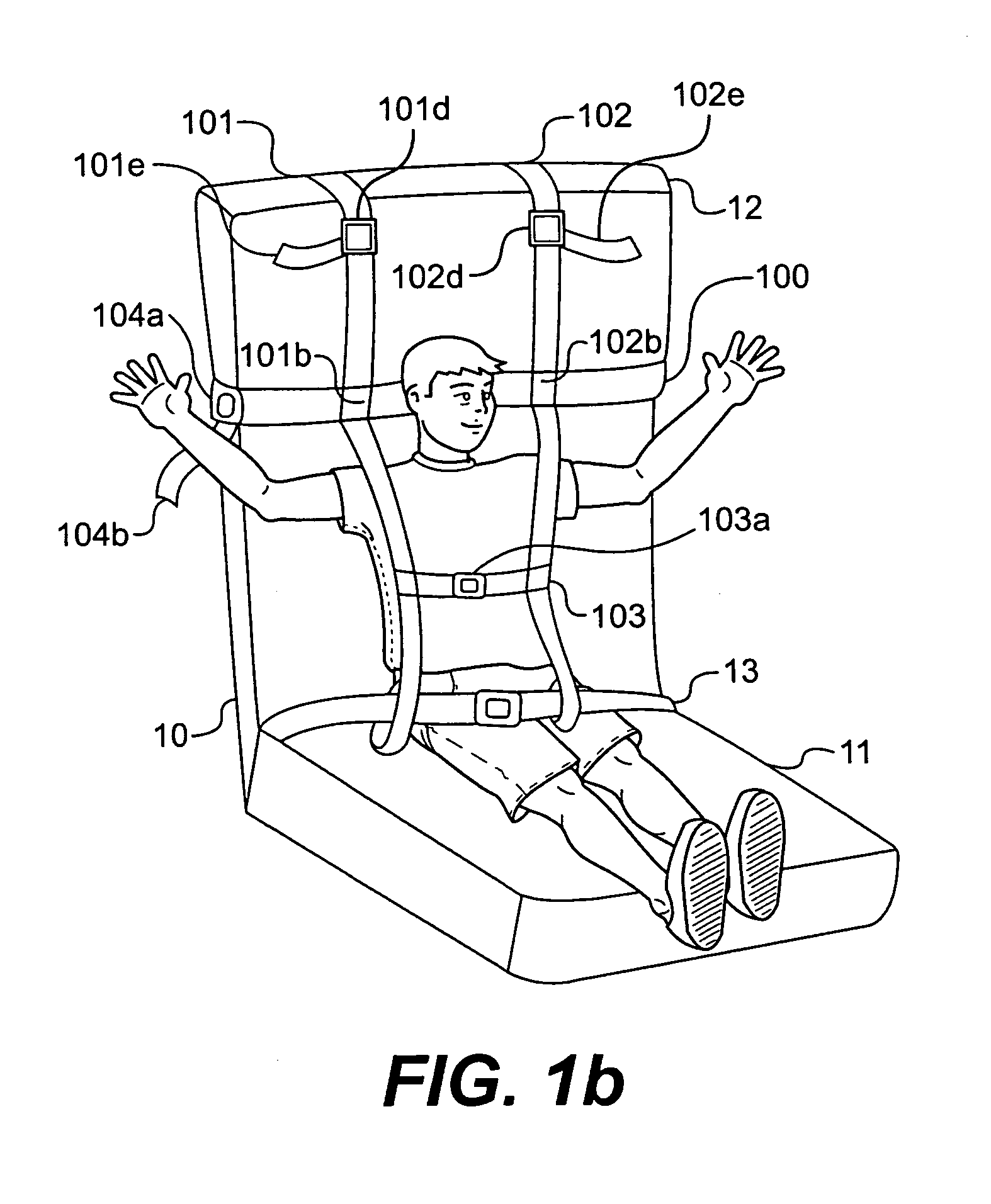Vehicle passenger safety devices
a safety device and passenger technology, applied in the field of passenger safety devices, can solve the problems of not every passenger of an airplane receives the full protection of a seat belt, children under 40 pounds do not receive the full benefit of seat belts, and airlines do not provide. to achieve the effect of improving passenger safety
- Summary
- Abstract
- Description
- Claims
- Application Information
AI Technical Summary
Benefits of technology
Problems solved by technology
Method used
Image
Examples
first embodiment
[0023]FIG. 1a is a schematic diagram of the present invention showing vehicle passenger safety device 100. As shown in FIG. 1a, this embodiment of the present invention comprises a pair of vertical straps 101 and 102, strap-holding belt 103, and horizontal strap 104. Vertical strap 101 is attached to horizontal strap 104 at locations 101a and 101b. Similarly, vertical strap 102 is attached to horizontal strap 104 at locations 102a and 102b. Preferably, vertical straps 101 and 102 are sewn to horizontal strap 104 at locations 101a, 101b, 102a, and 102b. In addition, vertical straps 101 and 102 have loops 101c and 102c, respectively.
[0024]Strap-holding belt 103 is attached to vertical strap 101 at location 103b, and to vertical strap 102 at location 103c. Preferably, strap-holding belt 103 has a fastener 103a. The preferred fastener is a buckle. Preferably, strap-holding belt 103 is sewn to vertical straps 101 and 102 at locations 103b and 103c, respectively.
[0025]Horizontal strap 104...
second embodiment
[0028]FIG. 2a is a schematic diagram of a vehicle passenger safety device 200 having seat-pan portion 210, back-support portion 220, and hinge 230 connecting seat-pan portion 210 and back-support portion 220. Seat-pan portion 210 and back-support portion 220 preferably have rigid exterior frames and padded interiors. One or both seat-pan portion 210 and back-support portion 220 may have a rigid skeleton enclosed by padded materials. In addition, back-support portion 220 has vertical straps 201 and 202, attached to back-support portion 220 at locations 201a and 202a, respectively. Horizontal strap 203 is attached, preferably by sewing, to vertical strap 201 at location 201b and to vertical strap 202 at location 202b. Portions 205a, 205b, and 205c are three components of three-way fastener 205. Horizontal strap 203 has fastener 203a, adjustable portion 203b, and portions of three-way fastener 205b and 205c. Fasteners 203a and 205 are preferably buckles. The first end of crotch strap 2...
third embodiment
[0031]FIG. 3a is a schematic diagram of a vehicle passenger safety device 300. In this embodiment, vehicle passenger safety device 300 comprises rigid front-support 301, inflatable cushion 301a, pump 301b, crotch strap 302 having loop 302a, horizontal strap 303, and a pair of cross-straps 304 and 305. Rigid front-support 301 is preferably made of tough polyurethane or another similar material. Belt 306, fastener 306a, and adjustable portion 306b are extensions of rigid front-support 301. Rigid front-support 301 either wraps around the back-support of the vehicle seat or snaps over the arms of the seat. Crotch strap 302 is attached to rigid front-support 301. Cross-straps 304 and 305 are attached to horizontal strap 303 at locations 304a and 305a, and they are attached to rigid front-support at locations 304b and 305b. In addition, cross-straps 304 and 305 are attached to each other at location 305c. Attachments of cross-straps 304 and 305 to each other and to horizontal strap 303 ma...
PUM
 Login to View More
Login to View More Abstract
Description
Claims
Application Information
 Login to View More
Login to View More - R&D
- Intellectual Property
- Life Sciences
- Materials
- Tech Scout
- Unparalleled Data Quality
- Higher Quality Content
- 60% Fewer Hallucinations
Browse by: Latest US Patents, China's latest patents, Technical Efficacy Thesaurus, Application Domain, Technology Topic, Popular Technical Reports.
© 2025 PatSnap. All rights reserved.Legal|Privacy policy|Modern Slavery Act Transparency Statement|Sitemap|About US| Contact US: help@patsnap.com



